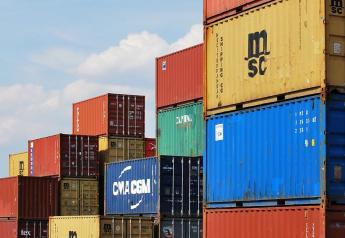Is There an Answer to African Swine Fever Fatigue?
ASF Fatigue
African swine fever (ASF) fatigue is real, says Patrick Webb, assistant chief veterinarian at the National Pork Board. Since ASF rocked China in 2018, U.S. pork producers have been bombarded with messages to do their part to protect the country from this deadly virus of pigs.
Just when complacency began to set in among some pork producers, news of the ASF virus striking the Dominican Republic and Haiti served as a wake-up call once again. The U.S. pork industry rallied even greater than before to keep ASF out.
Less than two years later, ASF fatigue came up in conversations during the 2023 National Pork Industry Forum. Has the fire begun to die down again? How do we keep the industry informed and at attention without putting people to sleep with the same old “be prepared” message?
What does it really look like to be prepared? What’s the answer to ASF fatigue?
“Ever since China announced ASF in 2018, it feels like we’ve been going 100 miles an hour. The key is producers want to know what to do now – what can I do now to prepare so I can move on?” Webb says.
USDA’s Deputy Administrator for Veterinary Services Jack Shere told Pork Forum attendees that the U.S. doesn’t have enough veterinarians in the pork industry to support sampling if the U.S. gets an ASF outbreak.
That’s why the Certified Swine Sampler Collector (CSSC) program is so vital, Webb says. It provides a way to train producers to collect samples on behalf of an accredited veterinarian to be submitted as part of an ASF surveillance program during an outbreak.
“That's a big deal because it increases the number of people that can help in an outbreak, getting samples into the lab very quickly, so we can determine where disease is and isn't,” Webb explains. “Dr. Shere also talked a lot about traceability and the importance of a mandatory traceability system for regionalization.”
Regionalization is key to getting trade back in the event of a foreign animal disease outbreak. Tools like AgView, the pork industry’s database and dashboard technology, are critical to be able to provide traceability data to animal health officials so they can make risk-based decisions for resumption of commerce and trade.
“Producers can get a Checkoff-funded AgView account to help them record and securely share their locations, movements, Secure Pork Supply documentation and laboratory test results with state animal health officials when it’s needed most: in an outbreak to quickly determine where disease is and isn't,” Webb says.
If the U.S. experiences an ASF outbreak, USDA will set up a disease control area. This area will include a lot of producers that may not have the disease, Webb points out, but they will be under movement restrictions because of the state's disease control measures.
“The Secure Pork Supply plan is designed to support producers within a control area to get back into business because they can now raise their hand and say, ‘Hey, I'm different. I'm doing these things. I've got the biosecurity, you have my traceability data, we have tested and we can demonstrate we're different.’ That’s important. But then the next question is, ‘What about the rest of the United States?’” Webb says.
The US Swine Health Improvement Plan, or US SHIP, is a pilot program producers can voluntarily enroll in to demonstrate their certified compliance with traceability, biosecurity and surveillance standards. Producers who have an ASF/CSF certified status within US SHIP provide a higher level of confidence that disease-free areas are indeed still free, thus promoting commerce and trade, Webb explains.
“We have all of these great tools and I think they are the answer to ASF fatigue,” he says. “If we can go through the ‘checklist,’ and check off all those things we need to do, then we can put ourselves in the best position to be prepared.”
Here's a new checklist from the Pork Checkoff to help your farm prevent and prepare.







